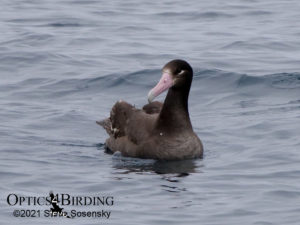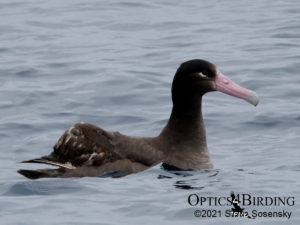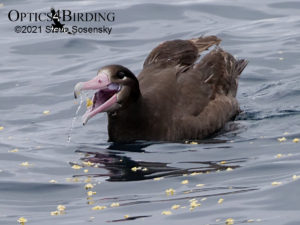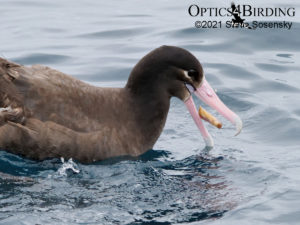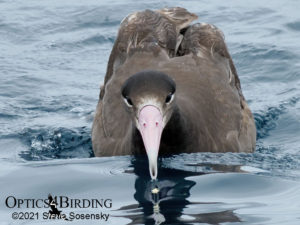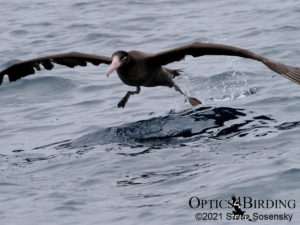Even on the most banal of days, birding is always an adventure. You often miss expected birds and see surprises. Sometimes, a rarity shows up and the chase is on. On Saturday, June 5th a few miles out of San Pedro, California, a fishing boat captain found a bird he did not recognize, so he texted a photo to a friend he knew could help. The bird turned out to be a Short-tailed Albatross!
Short-tailed Albatross History
Once a species that, based on bone records, may have bred on Santa Catalina Island 3700 years ago, Short-tailed Albatrosses currently only breed on Torishima and Minami Kojima Islands south of Japan. They still range over much of the northern Pacific Ocean but seem to prefer areas near land. eBird records are mostly from the east coast of Asia, the Aleutian Islands, and down the west coast of North America. While widespread and common in the late 1890s, by the 1930s they were almost extinct. Humans hunted these birds for feathers and eggs, and two volcanic eruptions also took their toll. Their population is now estimated to be in the low hundreds thanks to protection efforts begun by the Japanese government in 1951.
There were no records of Short-tailed Albatross in California waters from 1900 until 1977 when one was seen WSW of San Clemente Island. Since 1977, there have been 53 more records accepted by the California Bird Records Committee (CBRC). Of these, only three were in Southern California, in and around Morro Bay in 2005 and 2006, and one about 160 miles southwest of San Nicholas Island. All the rest of the recent California records have been off Northern California. Nearly all the recent California records have been fairly close to shore – not necessarily viewable from shore, but within a few miles of land. This Short-tailed Albatross was no different. The fishing boat found it inside the line of oil rigs that are easily visible from Palos Verdes and Huntington Beach.
Pelagic Strategy
Saturday evening, Diane Alps of the Marine Museum secured a boat and arranged a chase trip. The report from Saturday said that the albatross stayed with the fishing boat for more than two hours. It is common practice on pelagic birding trips to start slowly dropping a trail of popcorn off the stern of the boat. The popcorn attracts gulls, and the gulls flying around the boat attract other birds. When you get to an appropriate location, you also lay down a slick of fish oil so the aroma attracts the species that eat fish rather than algae. So, once in open water, we started feeding popcorn to the gulls.
Identification
We found the albatross about 90 minutes after we left the dock at 7:00 AM. At nearly the size of a Brown Pelican, it dwarfed the mixed flock of gulls in the area. Short-tailed Albatrosses spend their early life in brown plumage which eventually changes to mostly white with a golden wash on the head. Short-tailed Albatross juveniles have dark feet that become pale in subadults and adults. In all plumages, they have an enormous pink bill with a pale blue tip which distinguishes them from other albatrosses. Did I say they are large? Their wingspan ranges from 87 to 94 inches.
The Encounter
As we slowed down and approached it, the albatross seemed very comfortable with us being there. It came in for the popcorn that we offered. It also ate some pieces of fish but concentrated on the popcorn. Occasionally it would drift away from the boat but then would come back. Usually, it swam back, only flying a few times. As you can see, there was either heavy molt or damage on its right wing. When flying, the albatross rarely got more than a couple of feet above the water. This photo was more typical of it using its wings but not really taking off. This view helped age the bird as its feet were dark, indicating a juvenile. There was also a band on its right leg. I don?t know if anyone got a photo with legible markings. The albatross was very accommodating. It came in remarkably close to the boat making photos easy as long as the boat wasn’t rocking too much. Most of the photos shown here required little or no cropping.
The Short-tailed Albatross was a life bird for most of the birders aboard and a joy for all.

